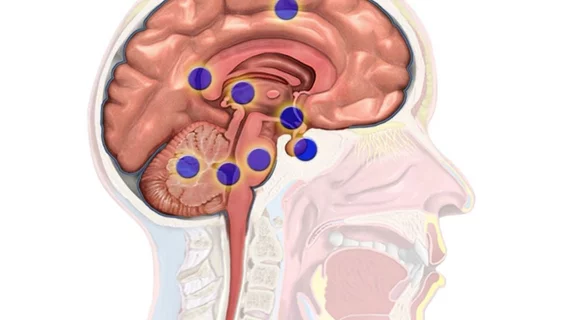AI helps radiologists detect brain aneurysms
A novel deep learning tool can help radiologists detect intracranial aneurysms on CT angiography (CTA) exams, according to research undertaken by a team of Stanford University researchers.
After eight clinicians reviewed more than 100 CTA exams, all showed big gains in sensitivity and accuracy when using the automated deep learning method.
“Search for an aneurysm is one of the most labor-intensive and critical tasks radiologists undertake,” said co-senior author Kristen Yeom, MD, associate professor of radiology at Stanford, in a prepared statement. “Given inherent challenges of complex neurovascular anatomy and potential fatal outcome of a missed aneurysm, it prompted me to apply advances in computer science and vision to neuroimaging.”
The researchers developed their tool based off of the established deep learning algorithm called HeadXNet. After Yeom et al. applied a training set of 611 CTA exams, eight clinicians tested HeadXNet by reading 115 scans with the algorithm and without it.
“We labelled, by hand, every voxel – the 3D equivalent to a pixel – with whether or not it was part of an aneurysm,” said Chris Chute, another co-lead author of the paper. “Building the training data was a pretty grueling task and there were a lot of data.”
With the tool, the eight readers identified six more aneurysms in a set of 100 scans. The automated tool increased the clinicians’ mean sensitivity by 0.059, mean accuracy by 0.038 and mean interrater agreement jumped from 0.799 to 0.859.
Importantly, there were no significant changes in mean specificity or the time it took for clinicians to decide on a diagnosis.
While their method shows great promise, and may even be trained to identify other diseases both inside and outside the brain, the authors noted, more research is needed to determine its generalizability to clinics and difference care centers.
“Because of these issues, I think deployment will come faster not with pure AI automation, but instead with AI and radiologists collaborating,” co-author Andrew Y. Ng, PhD, added, in the same statement. “We still have technical and non-technical work to do, but we as a community will get there and AI-radiologist collaboration is the most promising path.”
The full study was published online June 7 in JAMA Network Open.

